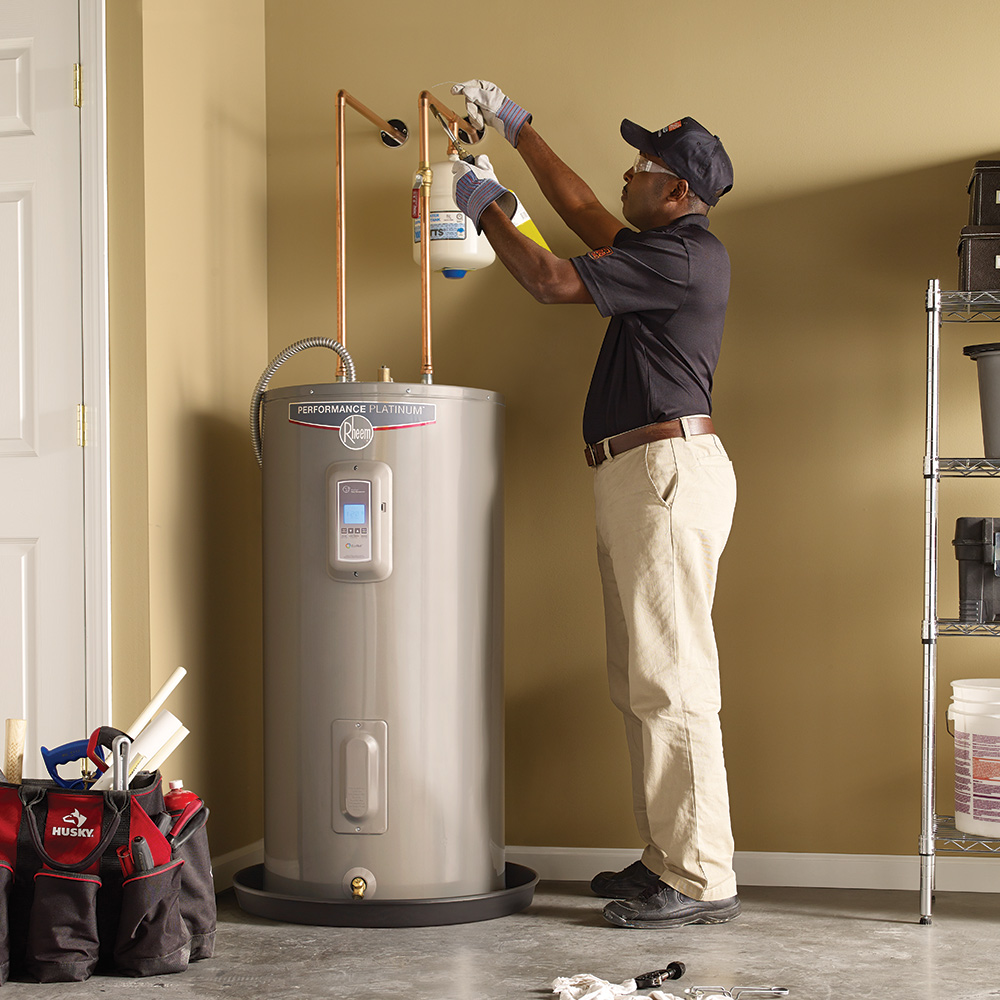Tips on How to Keep Your Home's Hot Water System in Good Condition
Tips on How to Keep Your Home's Hot Water System in Good Condition
Blog Article
We have unearthed this great article about How to Maintain Your Water Heater & Prolong its Life listed below on the net and accepted it made sense to talk about it with you here.

Warm water is crucial for day-to-day comfort, whether it's for a refreshing shower or cleaning recipes. To ensure your hot water system runs efficiently and lasts much longer, routine upkeep is key. This short article offers useful ideas and understandings on just how to maintain your home's warm water system to prevent disturbances and costly fixings.
Intro
Keeping your home's hot water system may seem complicated, however with a few straightforward actions, you can ensure it runs efficiently for several years ahead. This overview covers whatever from understanding your hot water system to DIY upkeep pointers and understanding when to contact expert help.
Significance of Maintaining Your Hot Water System
Normal upkeep not just prolongs the life expectancy of your warm water system however also ensures it operates efficiently. Neglecting maintenance can result in reduced efficiency, higher energy costs, and also early failure of the system.
Indicators Your Hot Water System Needs Upkeep
Recognizing when your warm water system requires interest can avoid significant problems. Watch out for signs such as irregular water temperature level, unusual sounds from the heater, or rusty water.
Flushing the Water Heater
Flushing your hot water heater eliminates sediment build-up, boosting effectiveness and extending its life.
Monitoring and Replacing Anode Rods
Anode poles protect against deterioration inside the container. Checking and replacing them when worn out is critical.
Facility Concerns Requiring Professional Aid
Instances consist of significant leakages, electrical issues, or if your hot water heater is regularly underperforming.
Routine Expert Upkeep Benefits
Professional upkeep can include extensive evaluations, tune-ups, and guaranteeing compliance with safety and security criteria.
Checking and Changing Temperature Level Settings
Readjusting the temperature level settings ensures optimum performance and safety.
DIY Tips for Upkeep
You can do a number of maintenance jobs yourself to keep your warm water system in leading condition.
Looking for Leakages
Routinely inspect pipelines and connections for leaks, as these can lead to water damages and higher bills.
Recognizing Your Warm Water System
Before diving right into upkeep tasks, it's valuable to understand the standard components of your hot water system. Commonly, this consists of the water heater itself, pipelines, anode poles, and temperature level controls.
Regular Monthly Maintenance Tasks
Normal monthly checks can help catch small concerns prior to they intensify.
Examining Stress Relief Valves
Testing the pressure relief valve guarantees it works appropriately and prevents excessive stress buildup.
Insulating Pipelines
Shielding warm water pipelines reduces warm loss and can conserve power.
When to Call a Specialist
While DIY upkeep is beneficial, some problems require specialist know-how.
Conclusion
Routine upkeep of your home's warm water system is crucial for performance, durability, and cost financial savings. By adhering to these suggestions and recognizing when to look for professional assistance, you can make certain a reliable supply of warm water without unanticipated interruptions.
How to Maintain an Instant Hot Water Heater
Before tinkering with your hot water heater, make sure that it’s not powered on. You also have to turn off the main circuit breaker and shut off the main gas line to prevent accidents. Also turn off the water valves connected to your unit to prevent water from flowing into and out of the appliance. 2. When you’re done, you have to detach the purge valves’ caps. These look like the letter “T†and are situated on either side of the water valves. Doing so will release any pressure that has accumulated inside the valves while at the same time avoid hot water from shooting out and burning your skin. 3. When the purge valves’ caps are removed, you have to connect your hosing lines to the valves. Your unit should have come with three hoses but if it didn’t, you can purchase these things from any hardware or home repair shops. You can also get them from retail stores that sell water heating systems. Read the user’s manual and follow it to complete this task properly. When the hosing lines are connected, open the purge port’s valves. 4. You should never use harsh chemical cleaners or solutions when cleaning your unit. Make use of white vinegar instead. It should be undiluted and you’ll probably use about 2 gallons. 5. Now flush your water heater. This task should probably take about 40 minutes. We can’t give you specific directions for this because the procedure is carried out depending on the type, model and brand of your heater. With that being said, refer to the user’s manual. 6. When you’re done draining the unit, you have to turn off the purge port valves again. Remove the hosing lines that you earlier installed on each of the water valves. Put the valve caps (purge port) back in their respective places and be very careful so as not to damage the rubber discs that are found inside these caps. 7. Now that everything’s back in place, check your user’s manual again to find out how to reactivate your water heating system. 8. Once it is working, turn one of your hot water faucets on just to let air pass through the heater’s water supply pipes. Leave the tap on until water flows smoothly out of it. https://www.orrplumbing.com/blog/2014/september/how-to-maintain-an-instant-hot-water-heater/

I was shown that article about How to Maintain a Hot Water Heater in a Few Simple Steps from an acquaintance on a different site. If you enjoyed reading our blog posting kindly remember to pass it around. Thank you for taking the time to read it.
See Availability Report this page